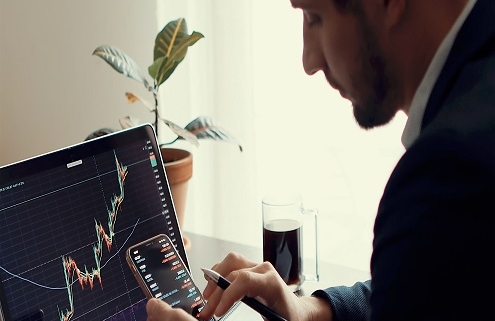There are many benefits and advantages of trading forex.
Here are just a few reasons why so many people are choosing this market:
No commissions
No clearing fees, no exchange fees, no government fees, no brokerage fees. Most retail forex brokers are compensated for their services through something called the “spread“.
No fixed lot size
In the futures markets, lot or contract sizes are determined by the exchanges. For example, a standard-sized contract for silver futures is 5,000 ounces.
In forex, you can trade smaller lot sizes or position size. This allows traders to open trades as small as 1,000 units.
Low transaction costs
The retail transaction cost (the bid/ask spread) is typically less than 0.1% under normal market conditions.
For larger transactions, the spread could be as low as 0.07%. Of course, this depends on your leverage, and all that will be explained later.
A 24-hour market
There is no waiting for the opening bell. From the Monday morning opening in Australia to the Friday afternoon close in New York, the forex market never sleeps.
This is awesome for those who want to trade on a part-time basis because you can choose when you want to trade: morning, noon, night, during breakfast, or in your sleep.
The FX market is sufficiently liquid that significant manipulation by any single entity is all but impossible during active trading hours for the major currencies.
The foreign exchange market is so huge and has so many participants that no single entity (not even a central bank or the mighty Chuck Norris himself) can control the market price for an extended period of time.
Leverage
In forex trading, a small deposit can control a much larger total contract value. Leverage gives the trader the ability to make nice profits, and at the same time keep risk capital to a minimum.
For example, a forex broker may offer 50-to-1 leverage, which means that a $50 dollar margin deposit would enable a trader to buy or sell $2,500 worth of currencies. Similarly, with $500 dollars, one could trade with $25,000 dollars and so on.
While this is all gravy, let’s remember that leverage is a double-edged sword. Without proper risk management, this high degree of leverage can lead to large losses as well as gains.
Deep Liquidity
Because the forex market is so enormous, it is also extremely liquid. This is an advantage because it means that under normal market conditions, with a click of a mouse, you can instantaneously buy and sell at will.
You are never “stuck” in a trade. You can even set your online trading platform to automatically close your position once your desired profit level (a limit order) has been reached, and/or close a trade if a trade is going against you (a stop loss order).
Low Barriers to Entry
You would think that getting started as a currency trader would cost a ton of money. The fact is, when compared to trading stocks, options, or futures, it doesn’t. Online forex brokers offer “mini” and “micro” trading accounts, some with a minimum account deposit of $50.
We are NOT saying you should open an account with the bare minimum, but it does make forex trading much more accessible to the average individual who doesn’t have a lot of start-up trading capital.
Free Stuff Everywhere!
Most online forex brokers offer “demo” accounts to practice trading and build your skills, along with real-time forex news and charting services.
And guess what?! They’re all free!
Demo accounts are very valuable resources for those who are “financially hampered” and would like to hone their trading skills with “play money” before opening a live trading account and risking real money.

















 +35726030417
+35726030417 support@Forextk.com
support@Forextk.com Android app
Android app